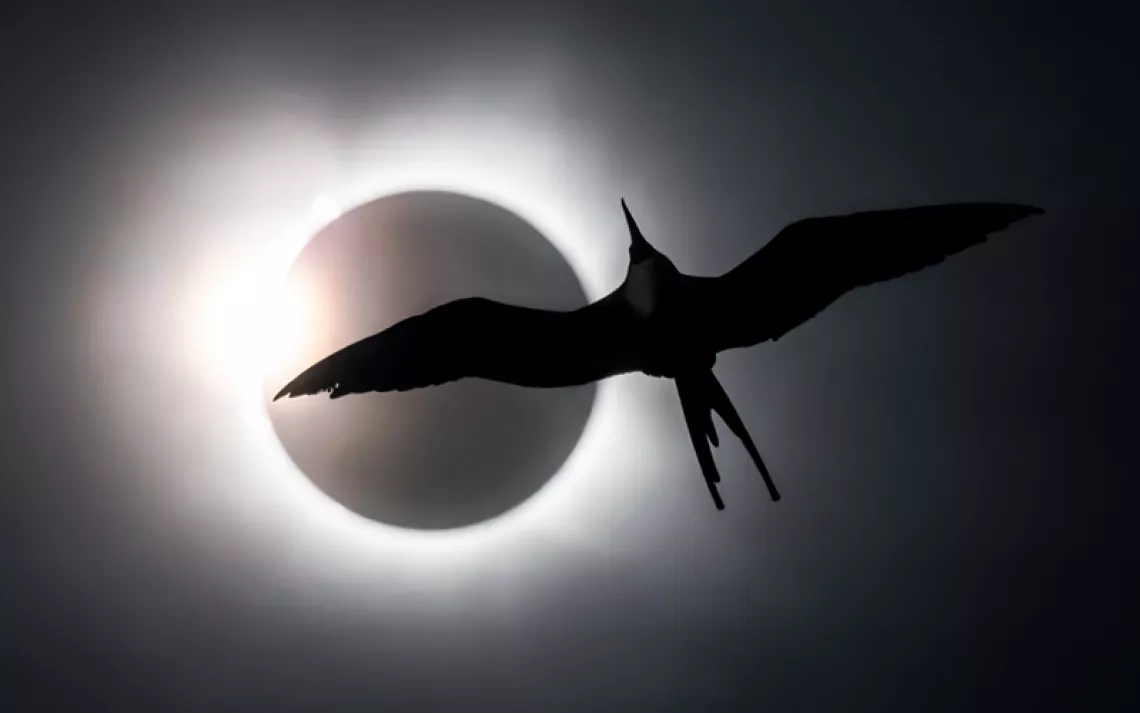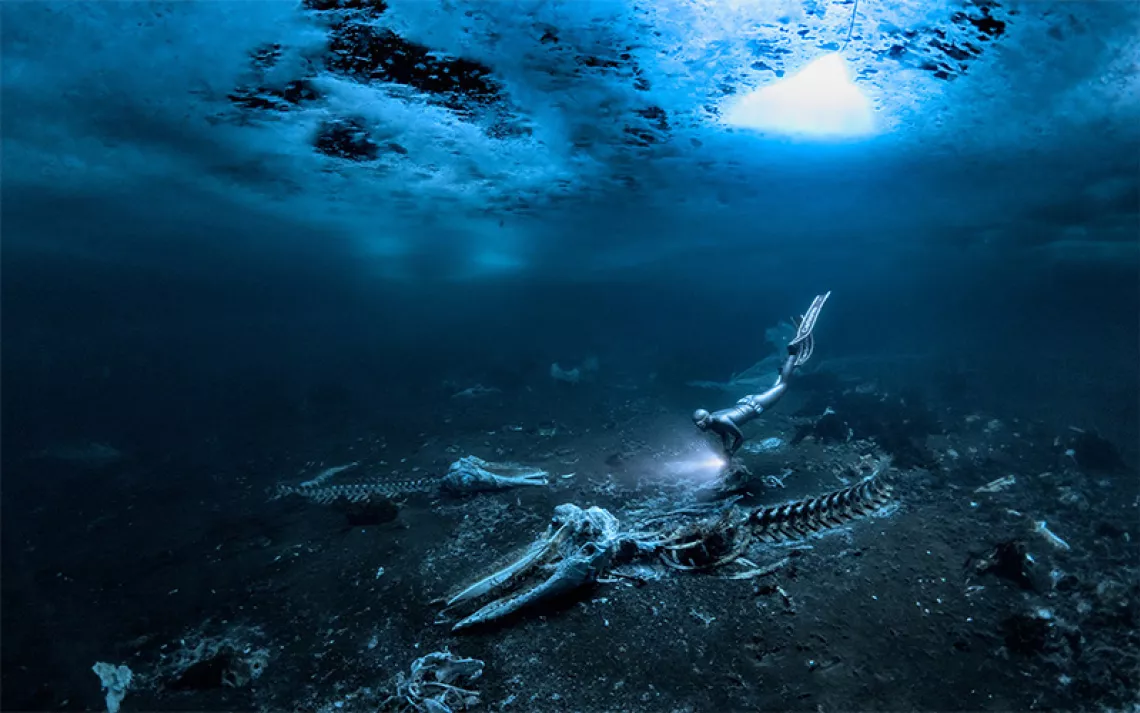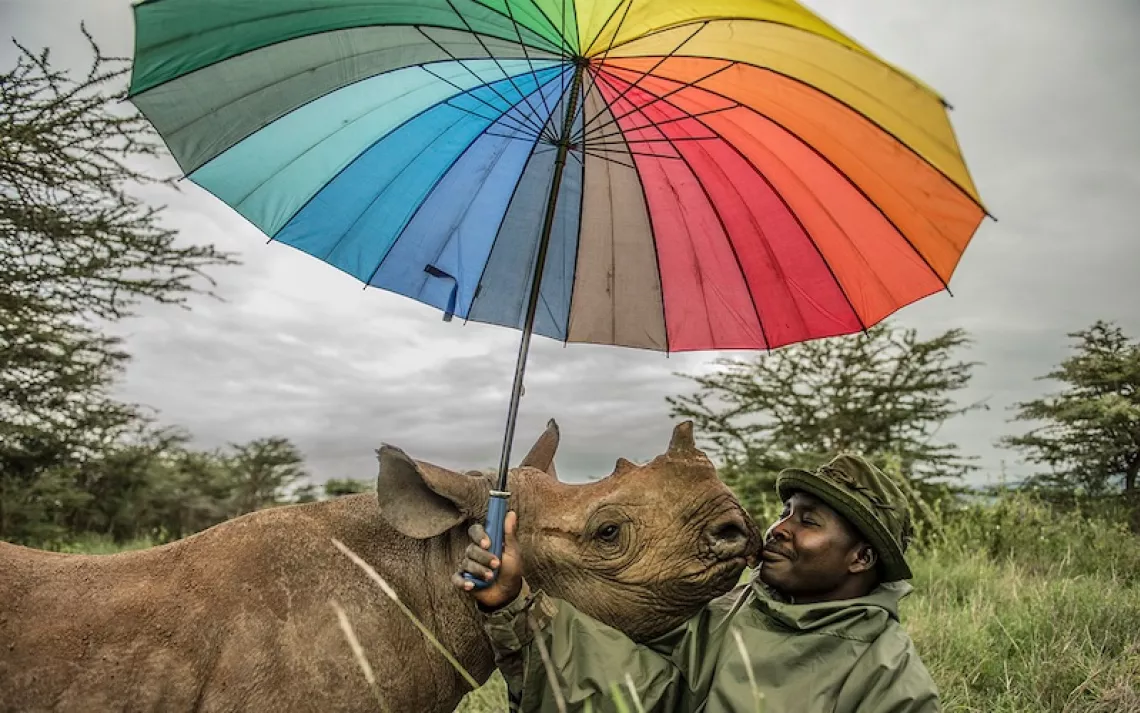Is the Human Race Sleepwalking to Oblivion?
Nick Brandt's "This Empty World" is an elegy for a planet in peril

Photo by Nick Brandt, Courtesy of Fahey/Klein Gallery, Los Angeles
Nick Brandt was on Africa's Serengeti Plain in 2007 when he took one of his most iconic photographs. Portrait of Lioness Against Rock is the archetype of animal portraiture: Captured in profile, the cat peers into the distance with a disaffected, powerful gaze. One almost feels the breeze smoothing over the charcoal tufts on her bronze coat.
A decade later, we encounter another lioness in Brandt's work, but the look and feel could not be more different. In Petrol Station With Lioness, from This Empty World (Thames & Hudson, 2019), a cat cast in a siren-red glow kicks up dust from denuded ground. She appears overcome with fear—a still frame of crisis. In juxtaposition, the men in the background stand around a gas station listlessly, hands in pockets.
The image epitomizes the exasperation dominating Brandt's current work. In This Empty World, beauty is exchanged for depravity, veneration for victimization. One hears Brandt calling out to us from nearly every photograph: Wake. Up.
"We are so caught up in our own lives, in what's going on through the prism of what we see on our iPhones, that we don't see the destruction happening all around us," Brandt told Sierra.
This Empty World is the culmination of Brandt's two-decades-long career photographing in Africa. In a trilogy of animal portrait collections—On This Earth (2001–04), A Shadow Falls (2005–08), and Across the Ravaged Land (2010–12)—Brandt presented his work as a counterpoint to conventional wildlife photography, eschewing glossy showcase shots for portraits that capture the personality, society, and intelligence of elephants, lions, and rhinos, among other animals.
But eventually, taking dignified, soulful portraits of disappearing species wasn't enough. As poachers in East Africa slaughtered with impunity and industrial development destroyed fragile ecosystems, Brandt felt compelled to act. In 2010, he cofounded the Big Life Foundation, which today coordinates over 200 rangers protecting 1.6 million acres of the Amboseli-Tsavo-Kilimanjaro ecosystem.
Perhaps the clearest intersection between Brandt's art and activism arrived in 2016 with Inherit the Dust. He printed life-size photos of endangered species and installed them in human landscapes—garbage dumps, factories, rock quarries, alleyways—creating a kind of elegy for a disappearing world.
This Empty World is similarly ambitious. Brandt fixed camera boxes at locations on Maasai ranchland (not on protected parkland). When animals came into view, the motion sensors triggered the lights and cameras. Later he staged scenes of human habitation and industry in the exact same spots where the animal pictures had been taken, constructing elaborate sets and using a hired cast of locals. He then stitched together the images—taken weeks, sometimes months, apart—to create composites.
The results are cinematic and dystopic: a rhino surrounded by car tires, a gazelle stranded in a village roundabout. The humans look as victimized as the animals—consummating a shared sense of melancholy and loss. The real villain is out of frame, represented by a garish red or blue light: human industry, human development, human ignorance.
"My motivation is my anger and despair at what we are losing, that the human race is sleepwalking its way to oblivion," Brandt said.
In River of People With Elephant at Night, 500 men and women stand in two lines. All are looking down, their faces lit up by the sickly blue glow of their cellphone screens. Between the lines, at the center of the frame, a lone elephant towers above them.
One gets the sense that at some point, they will all look up and the elephant will be gone.
Too late.
This article appeared in the July/August 2019 edition with the headline "Sleepwalking to Oblivion."
 The Magazine of The Sierra Club
The Magazine of The Sierra Club



